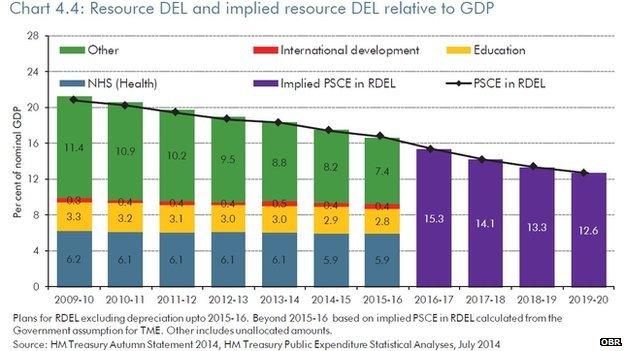Headline Numbers: Public spending heads to 80-year low
- Published

The Office for Budget Responsibility (OBR) says spending on public services is heading for an 80-year low.
In its report, external accompanying the Autumn Statement, it projected that spending by central government on public services was going to fall from 21.2% of gross domestic product (GDP) in 2009-10 to 12.6% in 2019-20.
As a proportion of GDP, that would probably take spending on public services to its lowest since the 1930s.
There's still a lot of cutting to come.
The OBR said that of the cuts to be made over that 10 year period, 40% would be during the current Parliament and the remaining 60% during the next Parliament.
As the chart from the OBR shows, we do not know where those cuts will come from in the last four years of the period, but they are big enough for the OBR to have questioned whether it was reasonable to accept that they were possible.
This is particularly an issue if the areas whose spending is currently protected - health, education and international development - continue to be protected.
"The implied cuts... during the next Parliament would pose a significant challenge if they were confirmed as firm policy, one that would be all the greater if existing protections were maintained," the OBR said, before concluding that it would nonetheless not be appropriate for it to declare they were not possible until there were signs of the government failing to achieve some its cuts.
If protected areas continue to be protected, the OBR calculated that spending by other departments would fall from £3,020 per person in 2009-10 to £1,290 per person by 2019-20 (all in 2014-15 prices), which would be a fall of 57.3%.
And that sounds like a big job for whichever party or coalition ends up in government after next year's election.